Top 10 High Iron Foods for Vegetarians and Vegans
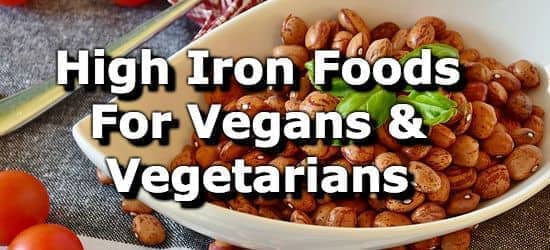
Iron is an essential nutrient primarily needed for the transport of oxygen throughout the body. A deficiency of iron can cause anemia (low red blood cell count). Symptoms of iron deficiency anemia may take time to develop and include fatigue, weakness, anxiety, heart palpitations, dizziness, and irritability. (1,2) Iron deficiency anemia is difficult to diagnose and requires a blood test. (1,2)
Iron from heme (meat) sources is better absorbed than iron from non-heme (plant sources), so vegans and vegetarians are often concerned about their iron status and intake. (3) The daily value (DV) seen on most food labels also takes vegetarians into account and is set at 18mg per day. (4) This amount of iron is a good goal for almost all individuals, except pregnant women, who should consume 27mg per day.
The good news is that the less iron you have, the more your body will absorb. When your iron stores are low, your body will absorb more iron from all sources. (3) Vitamin C, an antioxidant which is commonly found in plant foods, also boosts iron absorption. (5) The bad news is that certain other nutrients, like the polyphenols that are commonly found in plant foods, can reduce iron absorption. (6) For information, see the section on iron absorption.
Vegetarian and vegan sources of iron include beans, lentils, tofu, dark leafy greens, dark chocolate, whole grains, mushrooms, seeds, nuts, pumpkin, squash, and salad greens. Eating a wide variety of these foods should ensure you get the 18mg daily value for iron.
Below are the top 10 vegetarian and vegan iron food sources ranked by common serving size. For more, see the extended list of less common iron foods and the article on fruits and vegetables high in iron.
High Iron Foods for Vegetarians and Vegans
-
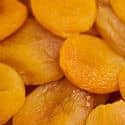 1. Dried Fruit (Apricots) + Add
1. Dried Fruit (Apricots) + Add
Iron
per CupIron
per 100gIron
per 200 Calories8mg
(42% DV)6mg
(35% DV)4mg
(22% DV)More Dried fruit High in Iron
- 36% DV per cup of dried peaches
- 26% DV per cup of dried prunes and currants
- 24% DV per cup of dried raisins
- 21% DV per cup of dried pears
- 17% DV per cup of dried figs
- 7% DV per cup of dried apples
Note: Dried fruit is high in natural sugars, so should be eaten in moderate servings of around 1 handful per day.
-
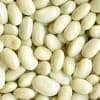 2. Large White Beans + Add
2. Large White Beans + Add
Iron
per CupIron
per 100gIron
per 200 Calories7mg
(37% DV)4mg
(21% DV)5mg
(30% DV)More Beans High in Iron
- 49% DV per cup of cooked soybeans
- 37% DV per cup of cooked lentils
- 26% DV per cup of cooked garbanzo beans (chickpeas)
- 25% DV per cup of lima beans
- 24% DV per cup of navy beans
- 20% DV per cup of black beans (frijoles negros)
- 20% DV per cup of pinto beans
- 20% DV per cup of black-eyed peas
See the complete list of beans high in iron.
-
 3. Spinach + Add
3. Spinach + Add
Iron
per Cup CookedIron
per 100gIron
per 200 Calories6mg
(36% DV)4mg
(20% DV)31mg
(172% DV)Other Greens High in Iron
- 22% DV per cup of cooked Swiss chard
- 16% DV per cup of cooked turnip greens
- 6% DV per cup of raw chopped kale
- 5% DV per cup of raw chopped beet greens
See the complete list of vegetables high in iron.
-
 4. Baking Chocolate (Unsweetened) + Add
4. Baking Chocolate (Unsweetened) + Add
Iron
per 1oz SquareIron
per 100gIron
per 200 Calories5mg
(28% DV)17mg
(97% DV)5mg
(30% DV)- 66% DV per cup of cocoa powder
- 6% DV in a 1.5oz (45g) piece of milk chocolate
-
 5. Quinoa + Add
5. Quinoa + Add
Iron
per CupIron
per 100gIron
per 200 Calories3mg
(15% DV)1mg
(8% DV)2mg
(14% DV)More Grains High in Iron
- 12% DV per cup of oatmeal
- 12% DV per cup of barley
- 11% DV per cup of rice
- 10% DV per cup of bulgur
- 7% DV per cup of buckwheat
- 6% DV per cup of millet
Bran from whole grains can impair absorption of iron supplements, while whole grains are a good source of iron, they should not be consumed with iron supplements.
See the list of all grains high in iron.
-
 6. White Button Mushrooms + Add
6. White Button Mushrooms + Add
Iron
per Cup CookedIron
per 100gIron
per 200 Calories3mg
(15% DV)2mg
(10% DV)12mg
(69% DV)Other Mushrooms High in Iron
- 45% DV per cup of morels
- 6% DV per cup of oyster mushrooms
- 3% DV per cup of shiitakes
See the complete list of vegetables high in iron.
-
7. Squash and Pumpkin Seeds + Add
Iron
per 1oz HandfulIron
per 100gIron
per 200 Calories3mg
(14% DV)9mg
(49% DV)3mg
(18% DV)More Seeds High in Iron
- 13% DV per oz of hemp seeds
- 12% DV per oz of chia seeds
- 11% DV per 1oz handful of sunflower seeds
- 9% DV per oz of flaxseeds
See the complete list of nuts and seeds high in iron.
-
 8. Acorn Squash + Add
8. Acorn Squash + Add
Iron
per Cup CookedIron
per 100gIron
per 200 Calories2mg
(11% DV)1mg
(5% DV)3mg
(18% DV)Pumpkin provides 7% DV iron per cup, most other winter squash provide 6% DV iron per cup.
-
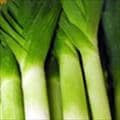 9. Leeks + Add
9. Leeks + Add
Iron
per CupIron
per 100gIron
per 200 Calories2mg
(10% DV)2mg
(12% DV)7mg
(38% DV)Scallions (Spring Onions) are also high in Iron with 0.4mg (2% DV) per large onion.
-
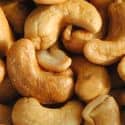 10. Cashews (Dry Roasted) + Add
10. Cashews (Dry Roasted) + Add
Iron
per 1 Oz HandfulIron
per 100gIron
per 200 Calories2mg
(9% DV)6mg
(33% DV)2mg
(12% DV)More Nuts & Seeds High in Iron
- 9% DV per 1oz handful of pine nuts
- 7% DV per 1oz handful of hazelnuts
- 7% DV per 1oz handful of peanuts
- 7% DV per 1oz handful of pistachios
- 6% DV per 1oz handful of almonds
- 6% DV per 1oz handful of macadamia nuts
See all nuts and seeds high in iron.
Printable One Page Sheet
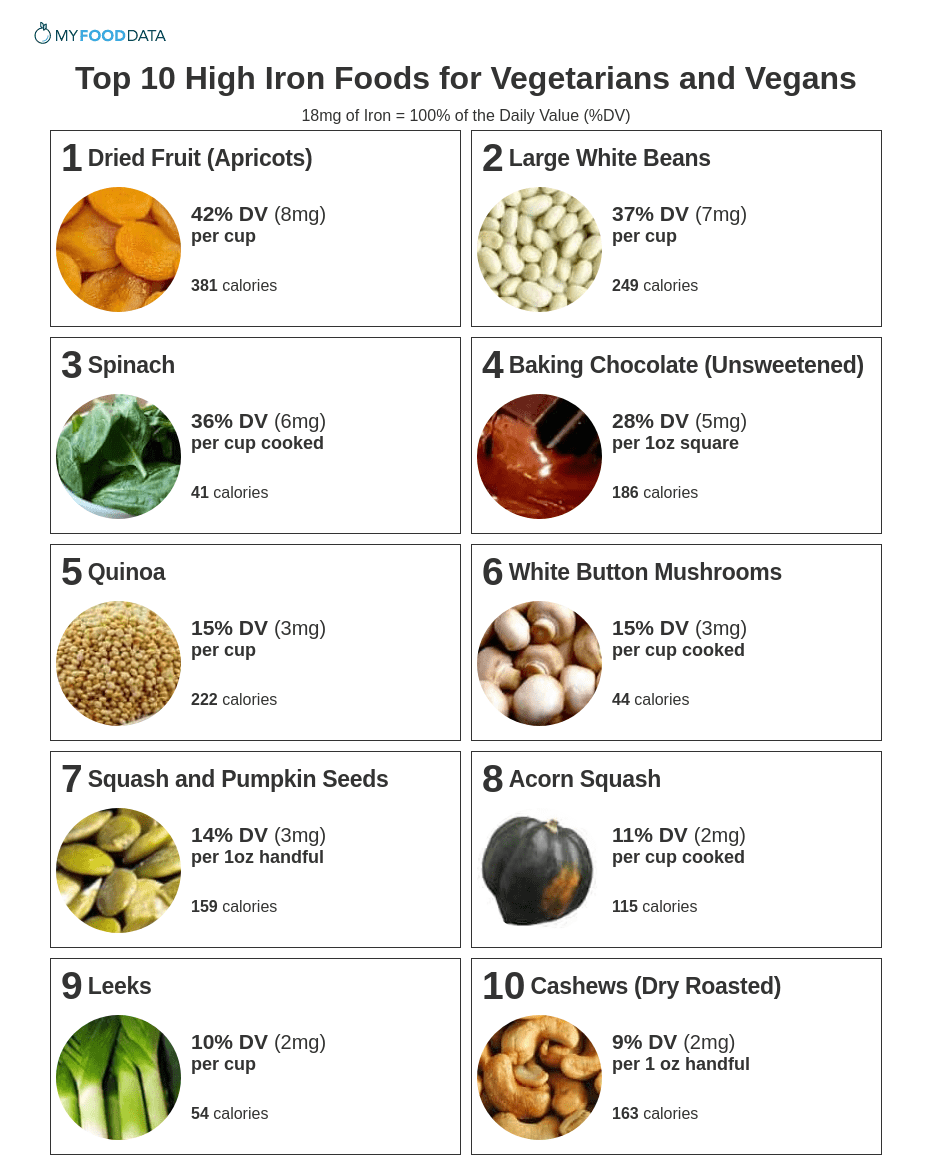
More Iron Rich Foods for Vegetarians
| Food | Serving | Iron |
|---|---|---|
| 1. Fortified Cereals + | per 3/4 cup | 109% DV (20mg) |
| 2. Artichokes + | 1 cup | 28% DV (5mg) |
| 3. Hearts of Palm + | 1 cup | 25% DV (5mg) |
| 4. Soy Protein Isolate + | 1oz | 23% DV (4mg) |
| 5. Dried Thyme + | 1 tblsp | 19% DV (3mg) |
| 6. Jute (Molokhiya) + | 1 cup | 15% DV (3mg) |
| 7. Green Peas + | 1 cup | 14% DV (2mg) |
| 8. Pumpkin Leaves + | 1 cup | 13% DV (2mg) |
| 9. Tempeh + | 100 grams | 12% DV (2mg) |
| 10. Spirulina (Dried Seaweed) + | 1 tblsp | 11% DV (2mg) |
| 11. Dried Goji Berries + | 5 tbsp | 11% DV (2mg) |
| 12. Tofu + | 1/5 Block | 10% DV (2mg) |
| 13. Whole Wheat Bread + | 1 slice | 6% DV (1mg) |
| 14. Molasses + | 1 tbsp | 5% DV (1mg) |
| 15. Sorghum Syrup + | 1 tbsp | 4% DV (1mg) |
How much Iron Do You Need Each Day?
The recommended daily allowance (RDA) for iron ranges from 7mg to 27mg per day. The daily value for iron is 18mg per day. (4)
| Life Stage | RDA |
|---|---|
| Infants | |
| 0-6 months old | 0.27mg* |
| 7-12 months old | 11mg |
| Children | |
| 1-3 years old | 7mg |
| 4-8 years old | 10mg |
| Males | |
| 9-13 years old | 8mg |
| 14-18 years old | 11mg |
| 19-50 years old | 8mg |
| 50+ years old | 8mg |
| Females | |
| 9-13 years old | 8mg |
| 14-18 years old | 15mg |
| 19-50 years old | 18mg |
| 50+ years old | 8mg |
| Pregnancy | |
| 14-18 years old | 27mg |
| 18+ years old | 27mg |
| Lactation | |
| 14-18 years old | 10mg |
| 18+ years old | 9mg |
Source: Dietary Reference Intakes for Iron.
Factors which Affect Iron Absorption and Retention
- The most important factor is your existing iron level. A low iron level will increase absorption, while a high iron level will decrease absorption. In general, you absorb 2% to 20% of the iron from foods. (8)
- Meat proteins increase the absorption of non-heme iron, meaning iron found in plant sources. Eating meat along with iron-containing plant foods will increase absorption of iron from these plants. (8)
- Vitamin C will increase the absorption of non-heme iron by as much as 85%. (5,6)
- Tannins, oxalates, polyphenols, and phytates can reduce the absorption of non-heme iron by up to 65%. These substances are found in a wide variety of plant foods, including coffee and tea. Black tea reduces absorption more than green tea and coffee. (9,10)
- The following teas and beverages also inhibit iron absorption: Most herbal teas (including peppermint and chamomile), cocoa, vervain (verbena), lime flower, berries, cherries, apples, nuts, soy products, spinach, and olives. (10)
From the Nutrient Ranking Tool
Use the ranking tool links below to select foods and create your own food list to share or print.
- Foods High in Iron
- Foods Low in Iron
- Vegetables High in Iron
- Fruits High in Iron
- Vegetarian Foods High in Iron
- Nuts High in Iron
- Grains High in Iron
- Beans High in Iron
- Dairy High in Iron
- Breakfast Cereals High in Iron
- Fast Foods High in Iron
View more nutrients with the nutrient ranking tool, or see ratios with the nutrient ratio tool.
Related
Data Sources and References
- Crider K, Williams J, Qi YP, Gutman J, Yeung L, Mai C, Finkelstain J, Mehta S, Pons-Duran C, Menéndez C, Moraleda C, Rogers L, Daniels K, Green P. Iron Deficiency Anemia: An Updated Review Cochrane Database Syst Rev. 2022 Feb 1;2(2022):CD014217. doi: 10.1002/14651858.CD014217. 36321557
- Crider K, Williams J, Qi YP, Gutman J, Yeung L, Mai C, Finkelstain J, Mehta S, Pons-Duran C, Menéndez C, Moraleda C, Rogers L, Daniels K, Green P. Anemia Screening Cochrane Database Syst Rev. 2022 Feb 1;2(2022):CD014217. doi: 10.1002/14651858.CD014217. 36321557
- Morris ER. Iron nutrition and absorption: dietary factors which impact iron bioavailability Fed Proc. 1983 Apr;42(6):1716-20. 6299808
- U.S.FDA - Daily Value on the New Nutrition and Supplement Facts Labels
- Hurrell RF, Reddy M, Cook JD. Effect of different drinks on the absorption of non-heme iron from composite meals Br J Nutr. 1999 Apr;81(4):289-95. 10999016
- Monsen ER. The role of vitamin C in iron absorption J Am Diet Assoc. 1988 Jul;88(7):786-90. 3290310
- Hurrell RF, Reddy M, Cook JD. Iron absorption and phenolic compounds: importance of different phenolic structures Br J Nutr. 1999 Apr;81(4):289-95. 10999016
- Morris ER. Iron nutrition and absorption: dietary factors which impact iron bioavailability Fed Proc. 1983 Apr;42(6):1716-20. 6299808
- Hurrell RF, Reddy M, Cook JD. Effect of different drinks on the absorption of non-heme iron from composite meals Br J Nutr. 1999 Apr;81(4):289-95. 10999016
- Brune M, Rossander L, Hallberg L. Inhibition of non-haem iron absorption in man by polyphenolic-containing beverages Eur J Clin Nutr. 1989 Aug;43(8):547-57. 2598894
Simplify Nutrition Tracking with MyFoodData!
Speedy Tools and Detailed Data FREEEasily analyze your meals to find the best foods for your goals.
✅ Use our recipe nutrition calculator and nutrition comparison tool.
✅ Access expert nutrition data tools and in-depth articles.
✅ Log foods and organize your recipes with a free account.
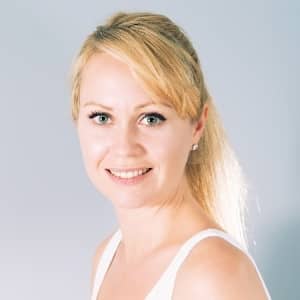
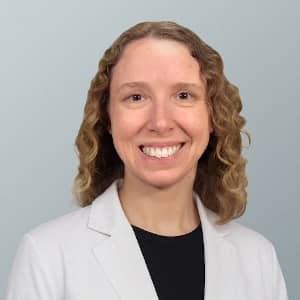
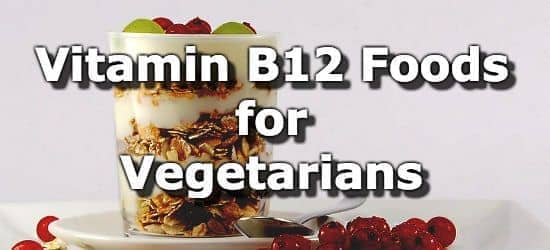 Next ➞
Next ➞
